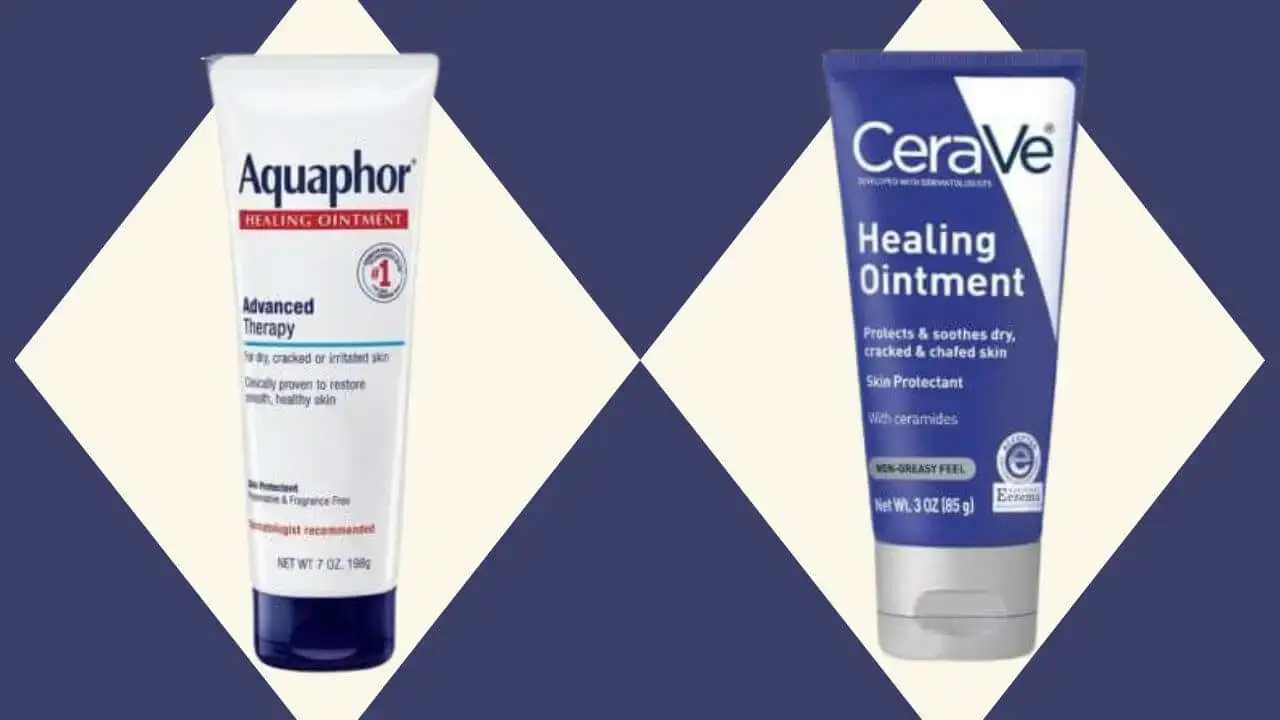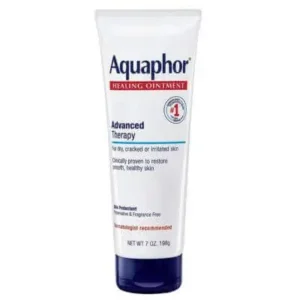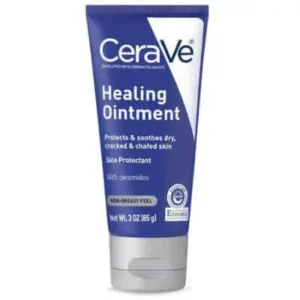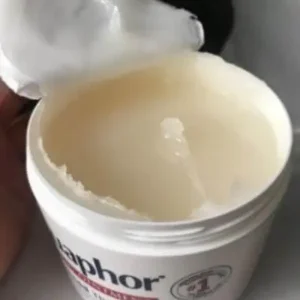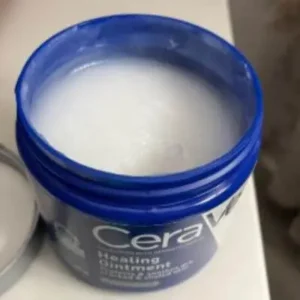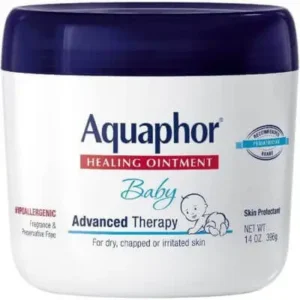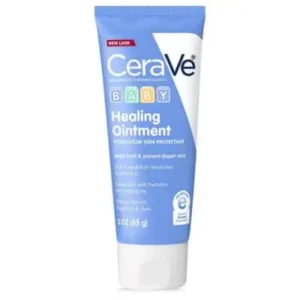Aquaphor vs Cerave Healing Ointment 2024 – Dermatologist Guide
The importance of maintaining skin health cannot be overstated, and healing ointments play their role in protecting, soothing, and healing. Among the options available, Aquaphor Healing Ointment and CeraVe Healing Ointment stand out as frontrunners.
Their popularity is not without merit. I will compare the two in detail to make a better choice when it comes to Aquaphor vs Cerave healing ointment.
Aquaphor vs CeraVe Healing Ointment Overview
Both Aquaphor and Cerave healing ointments are free from fragrances and preservatives, making them excellent choices for sensitive skin types. They are designed to protect the skin, lock in moisture, and assist in the healing process of minor irritations, such as cuts, burns, and chapped skin.
Aquaphor Healing Ointment
What Makes It Our Favorite: Aquaphor relies heavily on petrolatum (41%) to form a protective barrier on the skin’s surface, which is highly effective in trapping moisture. This results in a thicker, more occlusive texture that is particularly beneficial for extremely dry or compromised skin areas.
Its unparalleled versatility allows it to be used on a variety of skin issues, from dry, cracked skin and chapped lips to minor burns and cuts. Aquaphor is an indispensable ally against harsh weather conditions and for those with particularly dry or sensitive skin.
Ingredients: Petrolatum, Mineral oil, Ceresin, Lanolin alcohol, Panthenol, Glycerin, and Bisabolol.
- Petrolatum: Serves as the base of the ointment, creating a semi-occlusive barrier on the skin that supports moisture retention and healing.
- Mineral Oil and Ceresin: Work to soften the skin and enhance the barrier’s effectiveness.
- Lanolin Alcohol: Helps to moisturize and soothe the skin.
- Panthenol: Provitamin B5, which hydrates the skin, reduces itching and inflammation, and enhances the healing process.
- Glycerin: Attracts moisture to the skin, further aiding in hydration.
- Bisabolol: Derived from chamomile, known for its skin-soothing properties and ability to reduce irritation.
Related Topic: Aquaphor vs Eucerin
CeraVe Healing Ointment
What Makes It Our Favorite: CeraVe while also using 46.5% petrolatum, incorporates ceramides and hyaluronic acid in its formula, which are key components of the skin’s natural barrier and help retain moisture.
CeraVe’s inclusion of these ingredients, alongside its patented MVE Delivery Technology, ensures slow release of the ingredients and long-lasting hydration without the heavy feel, making it a lighter alternative suitable for daily use on dry to normal skin
Key Ingredients: Ceramides (1, 3, 6-II), Hyaluronic acid, Petrolatum, Mineral oil, Panthenol, Cholesterol, Phytosphingosine, Dimethicone and other skin-beneficial components.
- Ceramides (1, 3, 6-II): These essential lipids are vital for restoring and maintaining the skin’s natural barrier, helping to keep moisture in and irritants out.
- Hyaluronic Acid: Known for its ability to attract hydration to the skin’s surface and retain moisture, making the skin appear more supple and hydrated.
- Petrolatum: Acts as a protective barrier on the skin to prevent moisture loss, ensuring long-lasting hydration.
- Mineral Oil: Helps to lock in hydration and keep the skin soft and smooth.
- Panthenol (Provitamin B5): Hydrates the skin, reduces itching and inflammation, and supports the skin’s healing processes.
- Cholesterol: An essential component in the skin barrier, which helps to repair and protect the skin, ensuring its proper function and resilience against environmental stressors.
- Phytosphingosine: A lipid that naturally occurs in the skin, known for its antimicrobial properties and its role in helping to restore the skin’s natural barrier and reducing inflammation.
- Dimethicone: A silicone-based polymer that provides a protective coat and enhances the skin’s smoothness.
Together, these ingredients work synergistically to hydrate, repair, and protect the skin, making CeraVe Healing Ointment a highly effective solution for maintaining healthy skin.
Related Topic: Cerave vs La Roche Posay
Aquaphor Healing Ointment vs CeraVe Healing Ointment
As we dive deeper into comparing Aquaphor and CeraVe healing ointments, I’ve noted some distinct differences that might help you decide which is right for your needs.
Texture, Absorption, and Feel
Starting with texture, Aquaphor Healing Ointment has a slightly thicker, more viscous (not too much but comparatively a little more) consistency. It’s incredibly emollient, creating a protective layer on the skin that’s palpable. This texture means it takes comparatively a bit to absorb but ensures an unparalleled moisture barrier. The feel is decidedly occlusive, making it a boon for severely dry areas needing intense repair.
CeraVe Healing Ointment, in contrast, is a bit lighter and absorbs more readily into the skin without leaving a heavy residue. It feels more like a traditional moisturizer, making it easier to use over larger areas of the body or where less intense treatment is needed. The finish is hydrating without being overly sticky.
Ingredients Difference
The ingredients list is where these two ointments truly diverge. Aquaphor’s simplicity focuses on petrolatum, enhancing it with lanolin, glycerin, and bisabolol to soothe and protect. This formula is incredibly effective at sealing in moisture and aiding skin recovery with minimal components.
CeraVe, however, enriches its formula with ceramides, hyaluronic acid, and cholesterol—key ingredients for restoring the skin’s natural barrier.
Pricing, Size Options, and Value for Money
Regarding pricing and size options, both brands offer a range of choices to fit different needs and budgets. Aquaphor tends to be slightly less expensive per ounce, making it a cost-effective option. It’s available in various sizes, from small tubes perfect for on-the-go to larger tubs for regular use.
CeraVe’s price point is a bit higher, reflecting its advanced formula with ceramides and hyaluronic acid. Despite the price, the technology and ingredients offer significant value, especially for those seeking to improve their skin’s barrier function over time. Like Aquaphor, CeraVe comes in multiple sizes, providing flexibility for both travel and home use.
In assessing value for money, I consider not just the price but the benefits each ointment brings to my skincare routine. Aquaphor’s protective barrier is indispensable for acute skin issues, offering high value in its efficacy. CeraVe, with its barrier-restoring ingredients potentially reduces the need for additional skin care products.
Differences Between Cerave Healing Ointment and Aquaphor
| Feature | Aquaphor Healing Ointment | CeraVe Healing Ointment |
|---|---|---|
| Base Ingredient | Petrolatum | Petrolatum with ceramides |
| Texture and Feel | Comparatively thicker, creates a noticeable protective layer | Comparatively Lighter, less greasy |
| Key Ingredients | Mainly petrolatum, with lanolin, glycerin, and bisabolol | Ceramides, hyaluronic acid, and cholesterol, in addition to petrolatum |
| Primary Use | Intense moisture barrier for severe dryness and protection | Daily hydration, and barrier repair, suitable for broader use |
| Price Point | Generally less expensive per ounce | Slightly higher price point due to advanced ingredients |
| Best For | Targeted areas needing intense protection and moisture (e.g., elbows, knees, hands) | Overall body use |
CeraVe vs Aquaphor Healing Ointment Similarities
| Feature | Aquaphor Healing Ointment | CeraVe Healing Ointment |
|---|---|---|
| Fragrance-Free | ✅ | ✅ |
| Non-Comedogenic | ✅ | ✅ |
| Healing Properties & Moisturizing Effect | ✅ | ✅ |
| Suitable for Sensitive Skin | ✅ | ✅ |
| Versatility: can be used on various parts of the body including face and lips. | ✅ | ✅ |
Aquaphor vs CeraVe Healing Ointment Benefits
I’ve discovered that both Aquaphor and CeraVe healing ointments are indispensable due to their:
- Exceptional moisturizing capabilities, effectively combating dryness and dehydration.
- Ability to repair and strengthen the skin’s protective barrier, promoting resilience against environmental stressors.
- Versatility in addressing a wide range of skin concerns, from chapped lips to minor scrapes.
- Suitability for sensitive skin, formulated to minimize the risk of irritation.
- Healing properties, aiding in the recovery of minor cuts, burns, rashes, and other skin irritations.
Aquaphor vs CeraVe Healing Ointment for Lips
For lip care, Aquaphor’s comparatively dense, protective formula is a savior during harsh winters, healing my chapped lips overnight with its rich, emollient barrier. It’s my emergency rescue, offering immediate relief and rapid recovery.
Meanwhile, CeraVe’s lighter feel, and hydrating formula due to its unique blend of ceramides and hyaluronic acid is a daily essential for me, maintaining soft, supple lips without the tacky feel, perfectly priming them for lipstick or gloss.
Aquaphor vs CeraVe Healing Ointment for Dry Skin
For those battling dry skin, Aquaphor is a heavy-duty option that can provide immediate relief for even the most parched areas, making it perfect for spot treatments on elbows, knees, and heels. Its thick consistency is excellent for overnight treatments.
CeraVe, with its ceramide-rich formula, offers a comprehensive approach to dry skin by not only providing moisture but also helping to restore the skin’s barrier over time, making it a better daily-use product for those who prefer a lighter feel.
Aquaphor vs CeraVe Healing Ointment for Eczema
Eczema management requires careful product selection both ointments can soothe and moisturize eczema-prone skin. CeraVe’s ceramide-rich formula helps maintain the skin’s moisture barrier, effectively preventing flare-ups and keeping skin balanced. It’s a cornerstone of preventative skincare routine.
Aquaphor, with its soothing, protective layer, is indispensable for immediate relief during acute eczema episodes, protecting the skin from irritants and aiding in the healing process.
Aquaphor vs CeraVe Healing Ointment for Baby
For baby skin care, both Aquaphor and CeraVe offer variations of baby healing ointments. Specialized versions are formulated to meet the unique needs of baby skin, offering a safe and effective solution for a range of skin irritations beyond just diaper rash, such as dry skin and chapped cheeks.
Aquaphor is often the go-to for diaper rash due to its thick protective barrier that guards against wetness, soothing baby’s skin and providing immediate comfort.
CeraVe, with its lighter formula and essential skin-repairing ingredients, can be more suitable for daily use to prevent skin issues before they start, offering a preventative approach to maintaining healthy baby skin.
It’s reassuring to know that both brands have taken extra steps for the sensitive nature of baby skin, offering specialized variations that prioritize safety and efficiency.
Is Aquaphor and CeraVe Healing Ointment the Same?
While Aquaphor and CeraVe Healing Ointments may be used interchangeably for similar skincare needs, they are distinctly different, both at the brand and product levels.
Aquaphor is a brand under the umbrella of Eucerin, known for creating products that provide a protective barrier to the skin, focusing on healing and protecting. It has established itself as a go-to for emergency skin repair.
CeraVe, on the other hand, emphasizes skin barrier restoration and maintenance, with a formula rich in ceramides and hyaluronic acid. Their approach targets long-term skin health, offering products that integrate seamlessly into daily skincare routines.
Which is Better: Aquaphor or CeraVe Healing Ointment?
Determining which ointment is “better” depends on your specific skincare needs and goals.
If you’re dealing with severely dry, chapped skin or looking for a solution to protect minor cuts and burns, Aquaphor may be the better choice, ideal for intense, targeted healing.
For those seeking a product that can be used daily not only to moisturize but also to help restore the skin’s natural barrier, CeraVe stands out. Its inclusion of ceramides and hyaluronic acid supports skin health over time, making it suitable for individuals with normal to dry skin, including those with concerns like eczema.
The “better” product is thus subjective to skin types and intended use.
Related Topics:
Is Cerave Cruelty Free and Vegan?
Is Aquaphor Cruetly Free and Vegan?
Avene vs Eucerin
Lancome vs Clinique
Avene vs Clinique
La Roche Posay Vs Caudalie
Neutrogena Vs Olay
Bioderma Vs La Roche Posay

Lauren Graham
As a dedicated practitioner my focus in Medical Dermatology and Cosmetology allows me to address a wide range of skin conditions, offering both medical solutions and aesthetic enhancement. I write for people to understand their skin better, my writings are mainly aimed at promoting overall well-being and confidence.
Email: [email protected]

